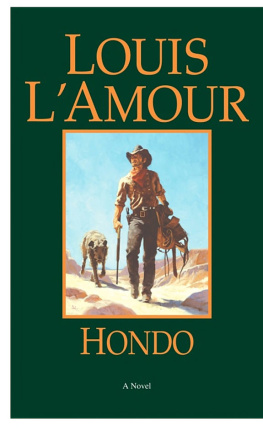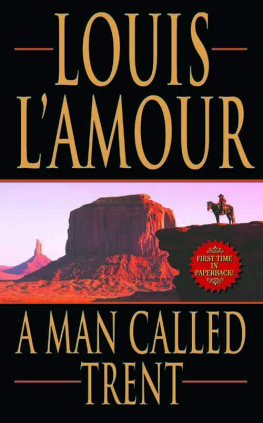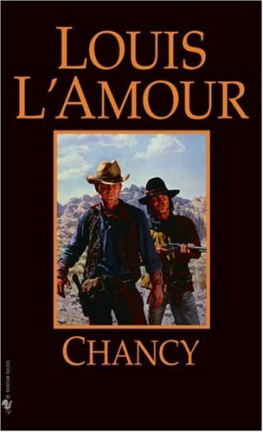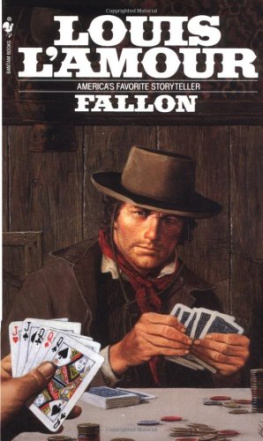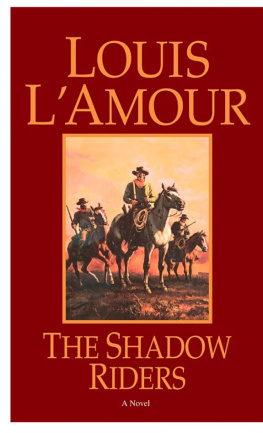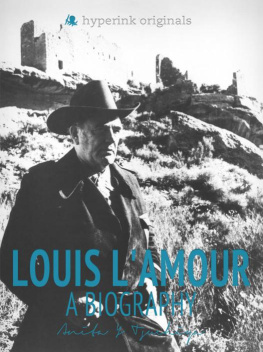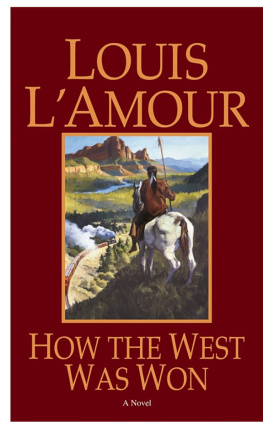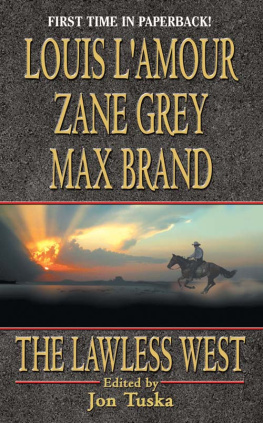Louis LAmour - West from Singapore
Here you can read online Louis LAmour - West from Singapore full text of the book (entire story) in english for free. Download pdf and epub, get meaning, cover and reviews about this ebook. year: 2005, publisher: Bantam, genre: Adventure. Description of the work, (preface) as well as reviews are available. Best literature library LitArk.com created for fans of good reading and offers a wide selection of genres:
Romance novel
Science fiction
Adventure
Detective
Science
History
Home and family
Prose
Art
Politics
Computer
Non-fiction
Religion
Business
Children
Humor
Choose a favorite category and find really read worthwhile books. Enjoy immersion in the world of imagination, feel the emotions of the characters or learn something new for yourself, make an fascinating discovery.

- Book:West from Singapore
- Author:
- Publisher:Bantam
- Genre:
- Year:2005
- Rating:4 / 5
- Favourites:Add to favourites
- Your mark:
- 80
- 1
- 2
- 3
- 4
- 5
West from Singapore: summary, description and annotation
We offer to read an annotation, description, summary or preface (depends on what the author of the book "West from Singapore" wrote himself). If you haven't found the necessary information about the book — write in the comments, we will try to find it.
West from Singapore — read online for free the complete book (whole text) full work
Below is the text of the book, divided by pages. System saving the place of the last page read, allows you to conveniently read the book "West from Singapore" online for free, without having to search again every time where you left off. Put a bookmark, and you can go to the page where you finished reading at any time.
Font size:
Interval:
Bookmark:

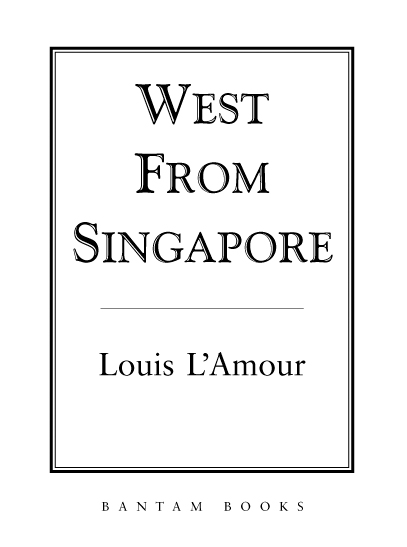
Contents
To Arlene Aizer, Stuart Applebaum, Diane Aronson, Barb Burg, Eileen Damore, Heather Florence, Rene Gelman, Sara Goodman, Linda Grey, Vicky Heredia, Kevin Jones, Stan Last, Yook Louie, Nick Mazzella, Serafina Messina, Michael Morrison, Jim Plumeri, David Ruitenberg, Sandy Su, Beverly Susswein, and Alberto Vitale for support above and beyond the call.
Foreword
T HE STORIES IN this collection and in a previous one, Night Over the Solomons, were written either just before World War II or after it had begun. It was not easy for a writer to get started then, and it is not easy now. The stories were a desperate effort to keep eating while working on a novel that, as a result of my going into the Army, was never completed.
During those early years I planned to write stories of the sea. The Pacific islands fascinated me, as did the coasts of Southeast Asia. Every island had its story. Already I had learned that a writer, if he expects to write much, must observe and remember. Often there is no chance to return and look again, even if the place remains unchanged, which is rare indeed.
To observe and rememberthese things were importantbut it was also important to listen well. The islands and seas of which I write were filled with color and excitement. It was easy to be carried away with all of that and to forget what was necessary. There were stories of shipwreck and mutiny, of blackbirding and pearl diving, of piracy and treasure. Captain Bligh had brought his open boat through these waters after the mutiny on the Bounty. La Prouse had vanished somewhere down here. Magellan had been killed here after what Europeans consider the first crossing of the Pacific. But there were a thousand and one stories of only locally known people who had met the sea and the islands and survived.
Although I am considered a western writer, and although I grew up in the west, my first stories were these, of the islands of Indonesia and neighboring waters. Wandering from port to port I met adventurers, planters, gold and diamond seekers and pearl buyers, men who sought the far places of the earth for one reason or another, just as I was doing. They were not unlike men I had known in mining camps and on cow ranches in the American west. Yet their motivations were different, for western men came to build and to create, not just to get rich and get out. Only in the goldfields of California could one find the counterparts to the drifters out for the main chance I came to know in the Pacific.
The hero of the stories in this book is Ponga Jim Mayo, a sailor of fortune who was the master of the Semiramis, a tramp freighter he would sail up and down the waters of the Pacific islands in search of a living. He was an Irish-American who had served his first years at sea sailing out of Liverpool and along the west coast of Africas Ponga River, where he picked up his nickname.
Hes a character I created from having gotten to know men just like him while I was a seaman in my yondering days. I sailed on a variety of steamers, freighters, and schooners back then, but I didnt stay on any one for too long. I would sail from one port to another, drop one ship and pick up another to go on someplace else. One time I went to sea from Los Angeles and took a trip completely around the world, ending up in New York. From there I took a tanker and went around to the west coast of the Panama Canal. On my first long trip, I served as an ordinary seaman. By my third trip I had passed the examination to become an able-bodied seaman, or A.B., as one is called. For a while I shipped on a schooner as a second mate where part of my job was to keep track of everything bought and sold for a captain who was very bright but who could read and write only with difficulty.
The ships on which I sailed around the East Indian islands got into all kinds of small ports to which no steamships or freighters ever sailed. We had an outboard motor on a launch that enabled us to go to a lot of remote places to pick up cargo where the tramp freighters couldnt reach. So I was able to visit places other men only dreamed of knowing.
The master of a tramp freighter in Far Eastern waters, like Ponga Jim Mayo, had to have a wide range of experience and information to succeed, and connections were extremely important. Knowing who had something to ship, knowing the availability of seasonal cargoes and the people who delegated the shipments, could make business easier and success more certain. Much of this is handled by the ships owners or their agents, but local knowledge was always important.
Much smaller, lighter cargo was handled by native-owned vessels, mostly sailing craft. Anticipating the outbreak of war, both the Japanese and Germans had established undercover relationships in the islands, to prepare for invasion in the case of the Japanese and in cooperation with merchant raiders in the case of the Germans.
There were always dissident elements, and even more common were those who looked merely for profit, not caring who it hurt if they made a fat dollar.
Ponga Jim Mayo was simply a ships master who fell into the path of history while just trying to make a living. Necessity as well as personal loyalties brought him into conflict with those who were preparing the way for invasion.
No other area on earth offers so many islands, so many small coves, harbors, and lagoons, so many rivers opening to the sea, and so great a variety of population, but to a seafaring man accustomed to those waters any vessel operating out of the normal pattern would arouse curiosity and, at such a time, suspicion.
There are few secrets in such areas. Shipping men are known to each other, and there is much rumor and gossip around the waterfront bars as well as in those more elaborate clubs further back from the sea. Nothing much happened that somebody did not know about, and such a man as Ponga Jim would have picked up all the scuttlebutt from along the waterfronts. Soerbaia, Samarang, Medan, Amurang, Makassar, Balikpapan, Port Moresby, Hollandia, and such places always had a few people who knew what was happening or about to happen.
Ponga Jim would have been familiar to all these people and would over the years have formed friendships or business relationships in all these places, including Darwin and Broome on the north coast of Australia.
The setting for Ponga Jims adventures, Indonesia, known before World War II as the East Indies, is without a doubt one of the most fascinating localities on earth. It consists of some 13,000 islanders scattered along the equator, with a total land area of 735,268 square miles. In those years it was referred to as the Netherlands East Indies, and the administration was Dutch. The British had interests there also, but ships came from all over the world, picking up or delivering cargo. Only the K.P.M. boats, a Dutch line, worked the smaller ports. Otherwise the shipping was native craft, mostly under sail, often with auxiliary motors.
Long before the coming of European traders, ancient civilizations were here, and ships came often from India, Arabia, and China. A thousand years before Columbus sailed to America, ships had left the Sunda Strait (between Java and Sumatra) to sail the 3,300 miles to Madagascar, a voyage considerably longer.
Of this I knew nothing when I arrived. It was during my knockabout years, and I was taking jobs where and when they could be found, at sea or ashore. Nothing in my schooling had prepared me for what I was to discover.
Next pageFont size:
Interval:
Bookmark:
Similar books «West from Singapore»
Look at similar books to West from Singapore. We have selected literature similar in name and meaning in the hope of providing readers with more options to find new, interesting, not yet read works.
Discussion, reviews of the book West from Singapore and just readers' own opinions. Leave your comments, write what you think about the work, its meaning or the main characters. Specify what exactly you liked and what you didn't like, and why you think so.

